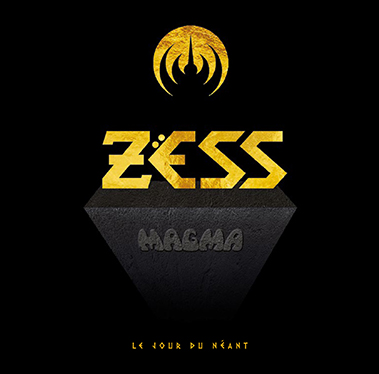FULGURANCE, APOTHÉOSE
ET TRANSFIGURATION
« Zëss », le nom lui-même est acéré comme une lame, effilé comme une entaille, furtif comme la course d’un météore. Si l’inspiration qui habite Zëss vient du fond des âges, une première ébauche se dessine en 1977. Peu à peu complété, le morceau sera joué une première fois en concert au printemps 1979, puis constituera l’une des pièces maitresses du répertoire de Magma jusqu’à sa mise en sommeil en 1983.
Alors que la musique semble naître de la nuit pour la transfigurer, les premiers accords s’étalent dans des lueurs d’aube, puis se lèvent tels de grands contre-jours. Leur orbe dessine déjà l’ovale d’un stade antique posé dans le noir sidéral, immense arène céleste qui résonne de toutes les voix de l’univers. Car tous s’y sont donnés rendez-vous pour une célébration ultime : celle du Jour du Néant.
Zëss est longtemps resté frappé par le sceau de son inachèvement, et son enregistrement a de fait été longuement différé. Quatre décennies après sa première esquisse, l’œuvre est enfin gravée, après avoir trouvé la formule orchestrale qui lui donne à la fois sa véritable dimension onirique et la force de son dépassement, exaltant alors un chant magnifié. Car Zëss est avant tout le reflet visionnaire d’un rêve immémorial qui hante la part la plus obscure des âmes.
Oratorio incandescent, Zëss pointe ainsi ce renversement suprême à travers lequel fuse cet au-delà de la musique que seule la musique permet d’atteindre. N’est-ce pas là cristallisée toute l’histoire de Magma…

